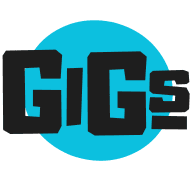4 Effective Pricing Strategies for Graphic Design Gigs and their Impact On Profitability
Graphic designers often struggle with setting the right prices for their services, impacting both their income and client relationships. This article explores effective pricing strategies that can significantly boost profitability in the graphic design industry. Drawing on insights from experts in the field, it delves into project-based pricing, minimum investment thresholds, tiered packages, and value-based pricing approaches.
- Project-Based Pricing Boosts Transparency and Profit
- Set Minimum Investment to Filter Quality Clients
- Tiered Packages Streamline Pricing and Increase Value
- Value-Based Pricing Aligns Fees with Client Outcomes
Project-Based Pricing Boosts Transparency and Profit
One approach that has been effective for me is project-based pricing with a clear scope defined upfront. I do not use hourly rates. Instead, I break down the cost based on the complexity, deliverables, and timeline. Then, I add a buffer for unexpected adjustments.
Clients appreciate knowing exactly what they're paying for. I avoid getting caught in endless revision cycles by capping them in the contract. This keeps things transparent and prevents "just one more change" from consuming my time.
In terms of profit, this approach has helped me maintain consistency. I'm not undervaluing my hours. If a project progresses smoothly, that buffer becomes a bonus. Additionally, clients often return because they trust the structure. This trust translates to less time spent pursuing new opportunities, allowing for more focus on delivering quality work.

Set Minimum Investment to Filter Quality Clients
You're right. Here's a tighter, focused answer—centered on one strategy: using a minimum level of investment to qualify leads and avoid pricing traps.
---
One pricing strategy that's worked brilliantly for me is setting a minimum level of investment.
Freelancing is full of second-guessing:
If a client says yes instantly, I think, "Should I have charged more?"
If they ghost me, I wonder, "Was I too expensive?"
That indecision used to kill my confidence.
But then I flipped the script.
Instead of obsessing over the perfect price, I focused on setting a floor—the lowest amount I'm willing to accept to make the project worth it.
This isn't a rate card. It's a filter.
Early in the sales process, I say:
"Projects typically start from £X depending on scope—does that fit where you're at?"
That one line changed everything.
It stops tire-kickers early.
It sets expectations.
It frees me to price based on value later without getting nickel-and-dimed.
It's helped me avoid wasting time on low-budget leads who want high-ticket results—and focus on clients who value what I do.
Profitability went up because I stopped negotiating from zero every time.
I'm not charging by the hour anymore.
I'm charging based on the results I can create—and that all starts with a clear minimum.

Tiered Packages Streamline Pricing and Increase Value
One pricing strategy that has worked really well for me is offering tiered packages. Instead of quoting by the hour or creating custom quotes for every project, I present three clear package options with defined inclusions and outcomes. This gives clients the flexibility to choose based on their needs while helping guide them toward more comprehensive solutions.
It's improved profitability by making the value of each level more visible. Clients often choose the mid or top tier because it feels like a smarter investment. It's also helped me manage scope better and streamline my process.

Value-Based Pricing Aligns Fees with Client Outcomes
One pricing strategy that has worked exceptionally well for me in graphic design gigs is value-based pricing instead of hourly or flat-rate pricing.
Rather than charging by the hour or offering a generic package, I focus on the client's perceived value of the work and the business outcomes it will deliver. For example, if I'm designing a logo for a local cafe versus a new national brand launch, the value to each business is vastly different—even if the time spent is similar.
How it works:
I start by understanding the client's goals—whether it's brand recognition, increased sales, or a rebrand to attract a new audience.
I then price the project based on the strategic importance and long-term value of the design, not just the design process.
I offer tiered pricing options, which let clients self-select based on budget and needs, often increasing average deal size.
Impact on profitability:
This approach has significantly boosted my income because I'm not limited by hours or underpricing flat fees.
Clients are often more engaged and committed because they see the project as an investment, not just a cost.
It has helped position me as a strategic partner, not just a service provider—leading to repeat business and referrals.
Value-based pricing encourages deeper client conversations and leads to higher earnings per project, while still keeping the work aligned with client expectations and outcomes.


